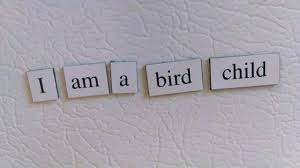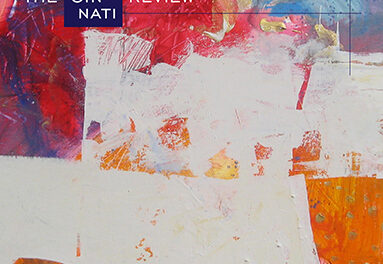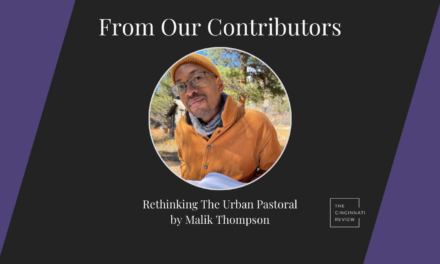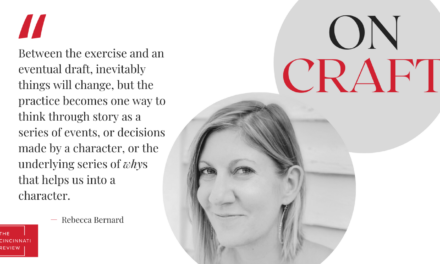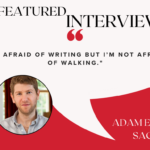As those of you following along know by now, last Friday here at UC Mary Szybist read from her National Book Award–winning collection Incarnadine. What you might not know is that during said reading Szybist shared an ekphrastic poem (a poem responding to a piece of visual art), an abecedarian (a poem in which each line begins with A, B, C, D, . . . Z), an erasure (a poem made by crossing out words of an existing text), and a cento (a collage-poem made from lines of other poet’s work, or, in Szybist’s case, lines from The Starr Report and Nabokov’s Lolita). It will come as no surprise to writers that giving oneself a set of constraints, or forcing oneself to try a new form or device, can produce surprising and lovely results. Find out below how 11.1 contributors Denise Duhamel, Julie Marie Wade, Charles Rafferty, Richard Robbins, and P. J. Williams used constraints to generate their imaginative new work:
Denise Duhamel & Julie Marie Wade: “Pink” and “Red” are from a series of lyric essays we wrote by email, one section at a time, limiting ourselves to 250 words per section. We riffed off each other, knowing we would also limit ourselves to ten sections. We used color as a point of departure, and it helped that one of us (Julie) has synesthesia. We each came to the project with our past and our passions, our associations with blushing and fire, gender conformity and the need to bust out. Each section is like a photograph or painting, a block of color and the shadows it casts.
Charles Rafferty (on his prose poem “Quarry”): For a few years now, I’ve been interested in the possibility of the prose poem—to see what can happen when I abandon the strictures of line. It’s oddly freeing. The poems feel fat, gluttonous, like anything can be brought into them and digested. In this case, I started with a whim: How could I make a poem that could contain “virginity” and “metamorphic,” “penny” and “dynamite.” Somehow, being allowed to proceed without the idea of line reining me in made the poem a little wilder, a little more expansive, a little more able to take these words and find a suitable place for them—together but not touching—like hand-me-down furniture that ends up seeming like part of a set. It has nothing to do with the fabric or the style. You just need a big enough living room.
Richard Robbins (on “Secret Father Rollover” and “Secret Father, Beginnings”): I’ve been attracted lately to writing sequences with independent poetic parts. It allows me to confront an idea or image, like mountains, over time and across disparate pieces. The idea may certainly have autobiographical resonance, but in any case it conjures real or contemplated situations that, through language, I find myself navigating on the page. The Secret Father poems are evocative for me in this way. Each involves a different problem for a different Secret Father, even though all of these fathers share a core concern about being hidden or disconnected. In the two pieces CR published, there are, coincidentally, contrary movements: One poem enacts the father’s methodical disappearance from lives he has been connected to, and the other reconstructs a connection after a dramatic auto accident. I’m sure there are deeper reasons these poems get written—I hope there are—but these are the triggers.
P. J. Williams: I wrote “Myth” at a time when everything coming out of my head was in iambs. I’d wake up in the morning, pour a cup of coffee, and begin: da DAH da DAH da DAH da DAH da DAH. Perhaps it traces back to listening to a bunch of blues, which I always think of in terms of structure, of familiarity, of little variations on tradition. I was also in the middle of wrestling with old memories and family histories and stories–some I’d asked my father about, others I remember vividly on my own, and the ever-shifting misremembered bits and pieces. “Myth” addresses that tenuous nature of memory, and how its instability becomes a topic itself, even when remembering something exactly and carefully feels like the most important thing. I chose the sonnet because of the form’s two-fold fit for “Myth”: first, it is a nod to tradition and the musical nature of storytelling; and second, the sonnet has a volta just as memory might suddenly turn on us. The form acts out my misremembering of the fish, the gravel road, the shrunken mountains. The only memory in the poem I can confidently say is true is that I faked crying at my grandfather’s funeral. But, then again, I wonder–and hope–that I’ve misremembered that, too, and that in my nine-year-old desire to cry–in my panic of wondering why I couldn’t cry–I’d actually wiped away my tears before they had a chance to reach the surface.


